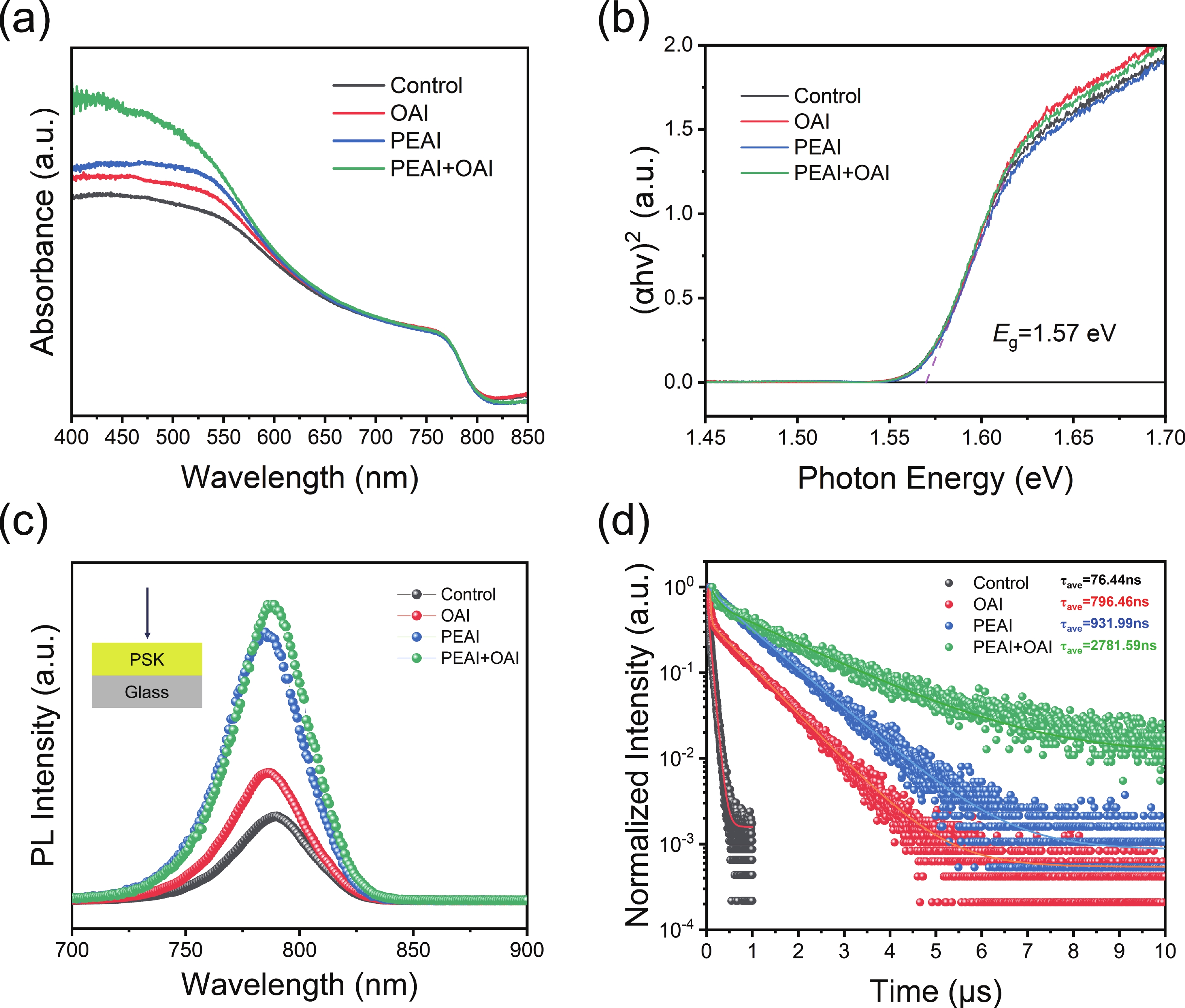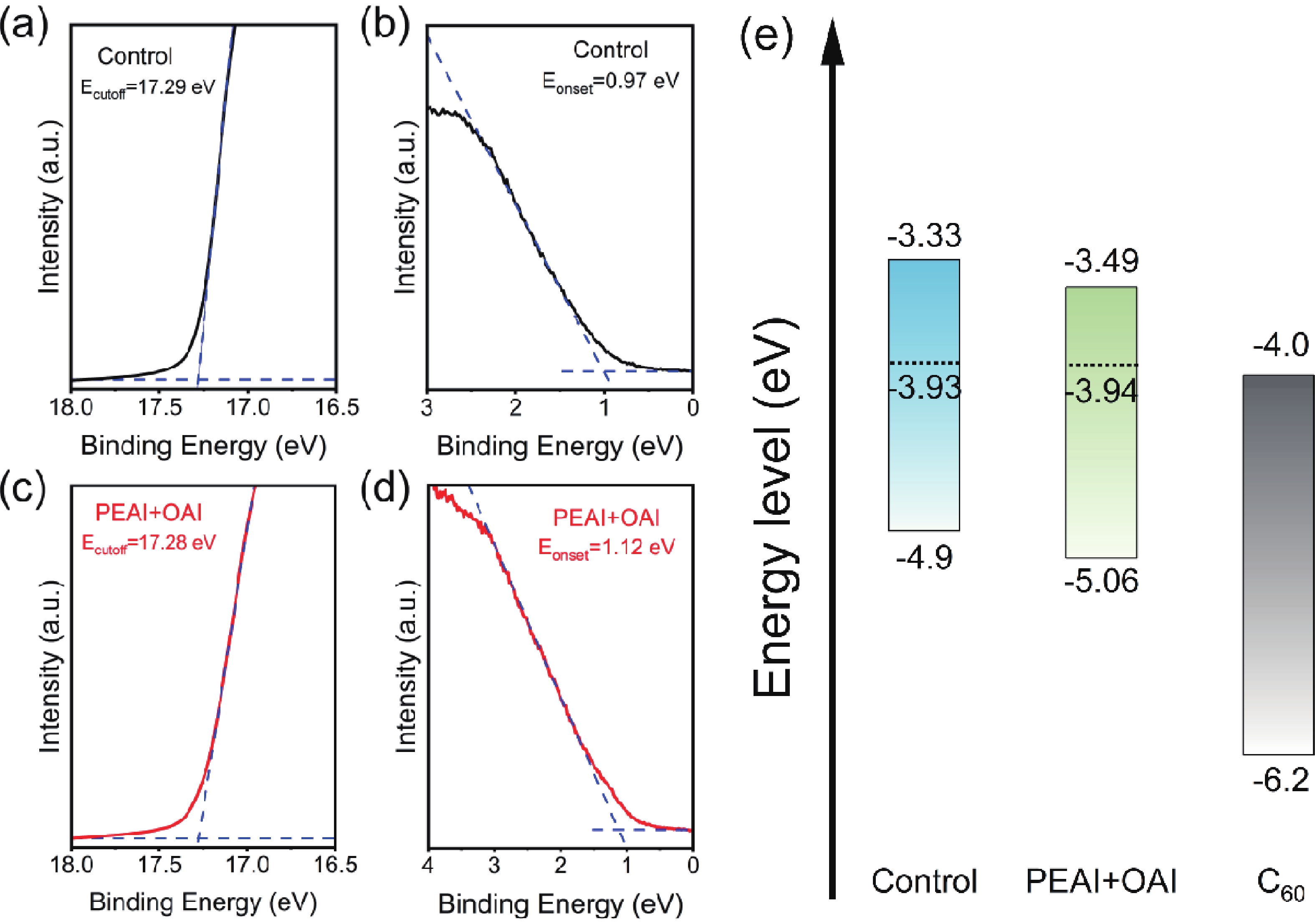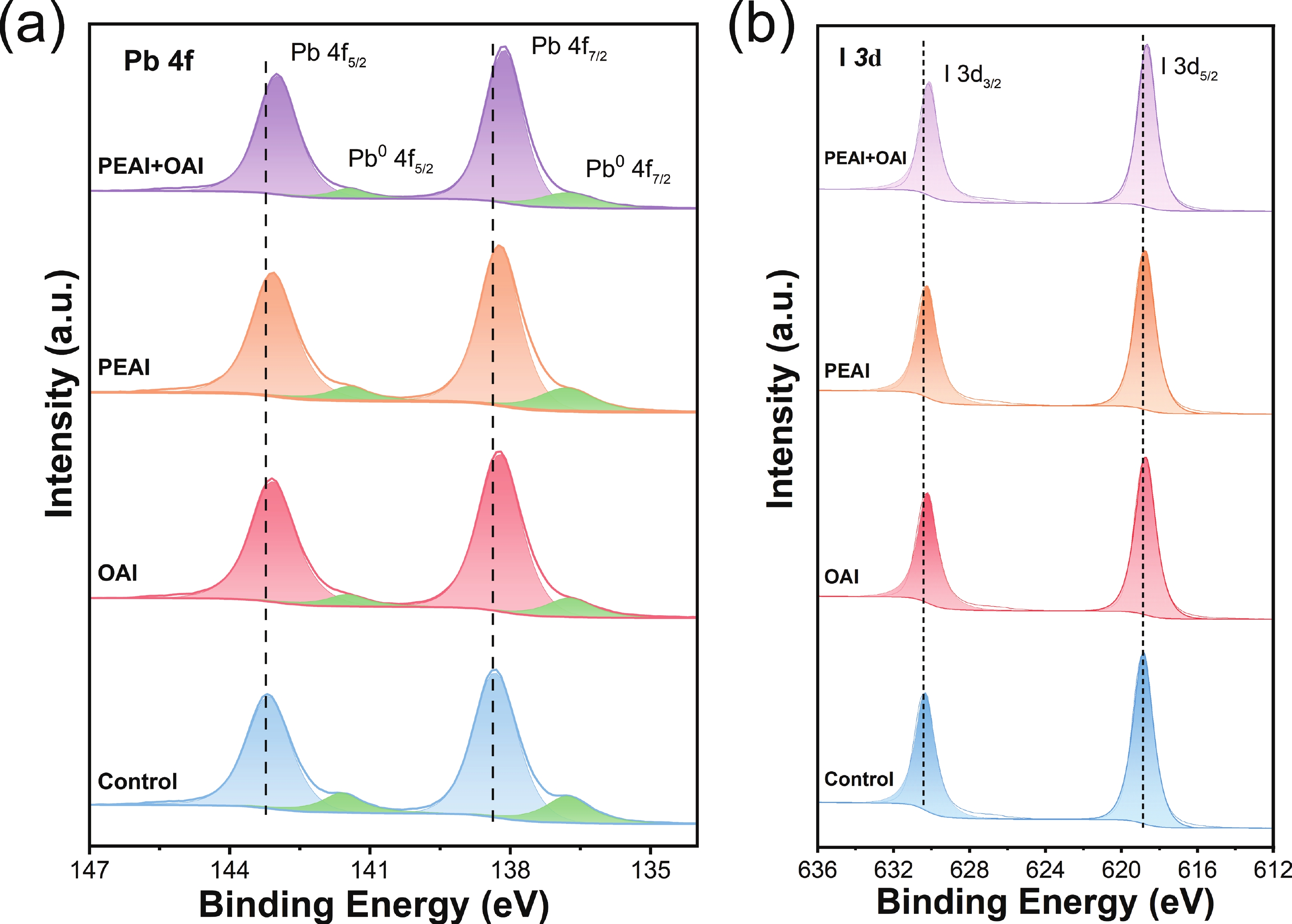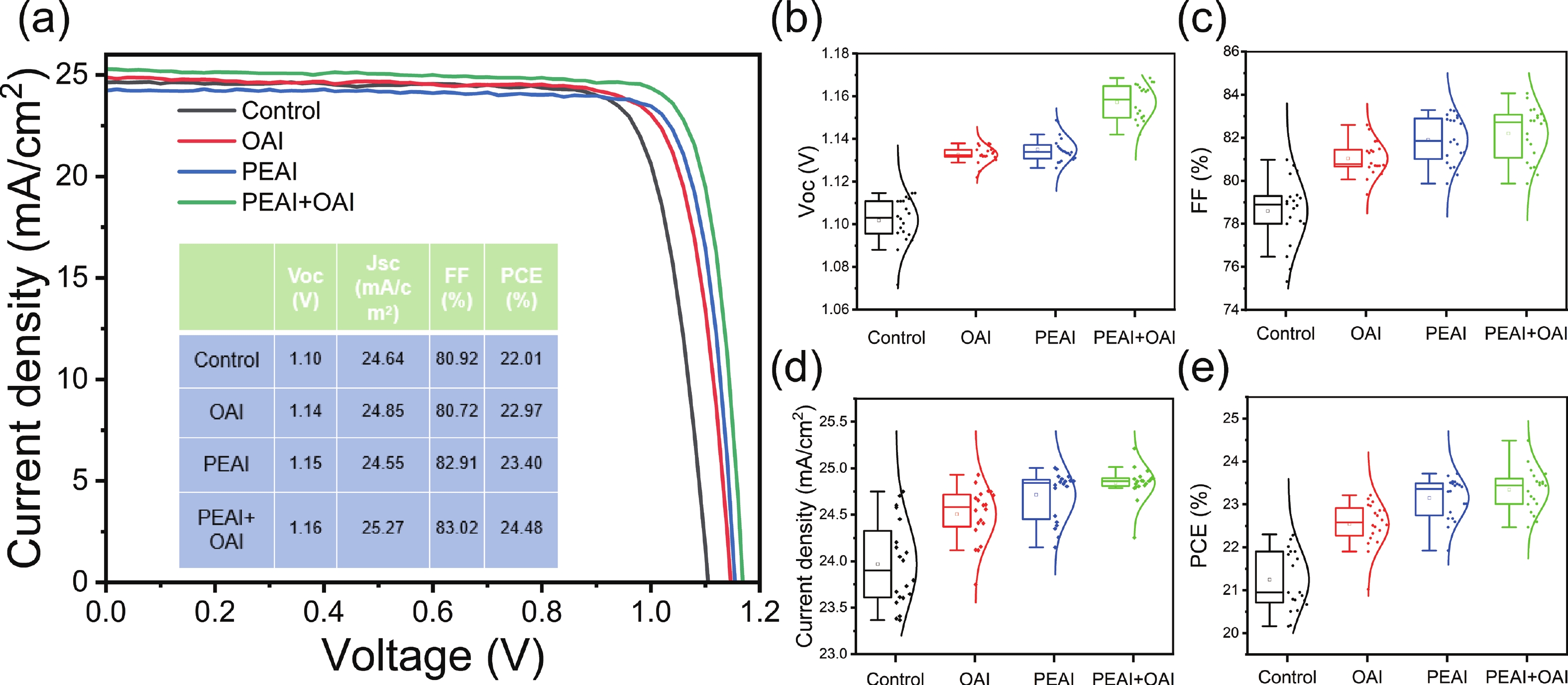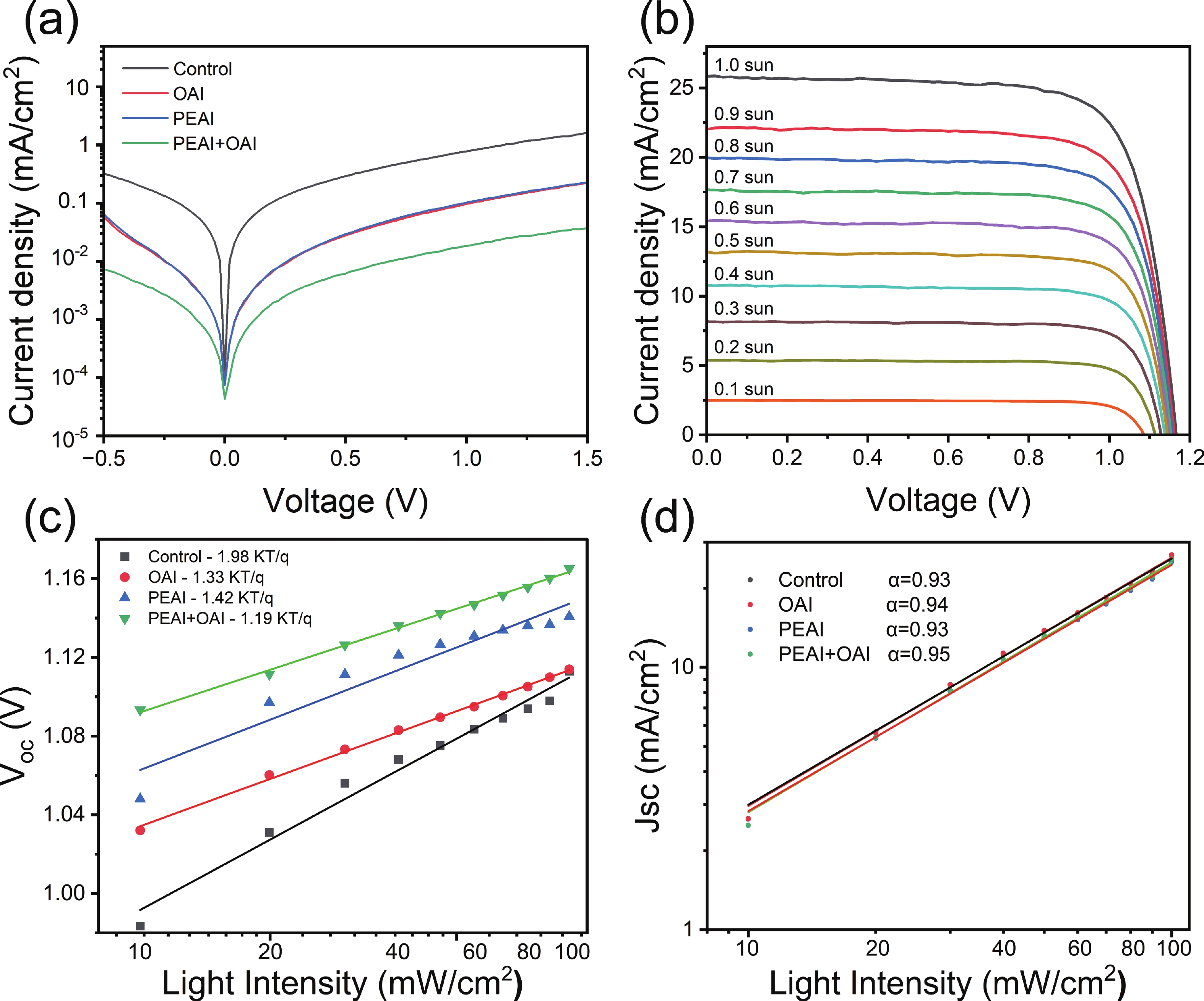| Citation: |
Chentai Cao, Yuli Tao, Quan Yang, Hai Yu, Yonggang Chen, Qiangqiang Meng, Jiajiu Ye, Xu Pan. Bilayer interfacial engineering with PEAI/OAI for synergistic defect passivation in high-performance perovskite solar cells[J]. Journal of Semiconductors, 2025, 46(5): 052805. doi: 10.1088/1674-4926/25030046
****
C T Cao, Y L Tao, Q Yang, H Yu, Y G Chen, Q Q Meng, J J Ye, and X Pan, Bilayer interfacial engineering with PEAI/OAI for synergistic defect passivation in high-performance perovskite solar cells[J]. J. Semicond., 2025, 46(5), 052805 doi: 10.1088/1674-4926/25030046
|
Bilayer interfacial engineering with PEAI/OAI for synergistic defect passivation in high-performance perovskite solar cells
DOI: 10.1088/1674-4926/25030046
CSTR: 32376.14.1674-4926.25030046
More Information-
Abstract
Interfacial defects and environmental instability at perovskite surfaces pose significant challenges for inverted perovskite solar cells (PSCs). Surface post-treatment strategies have emerged as a viable approach to improve film quality and passivate defects. Although organic molecules can passivate both surfaces and grain boundaries via hydrogen or covalent bonding, their limited adsorption specificity often results in incomplete defect neutralization. In this work, we introduce a bilayer passivation approach employing phenethylammonium iodide (PEAI) and n-octylammonium iodide (OAI) to concurrently mitigate non-radiative recombination and improve stability. PEAI passivates undercoordinated Pb2+ at grain boundaries and surfaces, effectively eliminating deep-level traps and suppressing non-radiative losses. Meanwhile, OAI forms a hydrophobic barrier on the perovskite surface through its long alkyl chains, inhibiting moisture penetration without compromising interfacial charge transport. As a result, the perovskite film exhibits significantly enhanced optoelectronic performance and environmental stability, achieving a champion power conversion efficiency (PCE) of 24.48%. -
References
[1] National Renewable Energy Laboratory. Best Research Cell Efficiencies. 2025[2] Wang D, Chen J B, Zhu P D, et al. Binary microcrystal additives enabled antisolvent-free perovskite solar cells with high efficiency and stability. Adv Energy Mater, 2023, 13(7), 2203649 doi: 10.1002/aenm.202203649[3] Han S Y, Do J J, Jung J W. Strategic defect control of perovskite nanocrystallites with octylammonium iodide toward efficient red perovskite light-emitting diodes with high operative stability. J Mater Chem A, 2024, 12(27), 16687 doi: 10.1039/D4TA00369A[4] Liu X T, Jiang X Q, Yin Y F, et al. Dominating (111) facets with ordered stacking in perovskite films. Energy Environ Sci, 2024, 17(16), 6058 doi: 10.1039/D4EE01863J[5] Tao Y L, Liang Z, Ye J J, et al. Bidirectional anions gathering strategy afford efficient mixed Pb-Sn perovskite solar cells. Small, 2023, 19(20), 2207480 doi: 10.1002/smll.202207480[6] Tao Y L, Liang Z, Ye J J, et al. Self-deposited passivation for decreasing scalable processing loss of perovskite solar cells. Commun Mater, 2024, 5, 166 doi: 10.1038/s43246-024-00585-2[7] Liang Z, Zhang Y, Xu H F, et al. Homogenizing out-of-plane cation composition in perovskite solar cells. Nature, 2023, 624(7992), 557 doi: 10.1038/s41586-023-06784-0[8] Wang J R, Bi L Y, Huang X F, et al. Bilayer interface engineering through 2D/3D perovskite and surface dipole for inverted perovskite solar modules. eScience, 2024, 4(6), 100308 doi: 10.1016/j.esci.2024.100308[9] Wang T, Bi L Y, Yang L, et al. Dimensional regulation from 1D/3D to 2D/3D of perovskite interfaces for stable inverted perovskite solar cells. J Am Chem Soc, 2024, 146(11), 7555 doi: 10.1021/jacs.3c13576[10] Ma C Q, Kang M C, Lee S H, et al. Facet-dependent passivation for efficient perovskite solar cells. J Am Chem Soc, 2023, 145(44), 24349 doi: 10.1021/jacs.3c09327[11] Liu H F, Liu T T, Wang X T, et al. Surface formamidine cation immobilization for efficient FA-based perovskites solar cells. Adv Energy Mater, 2024, 14(44), 2401809 doi: 10.1002/aenm.202401809[12] Luo X H, Liu X, Lin X S, et al. Recent advances of inverted perovskite solar cells. ACS Energy Lett, 2024, 9(4), 1487 doi: 10.1021/acsenergylett.4c00140[13] Canil L, Cramer T, Fraboni B, et al. Tuning halide perovskite energy levels. Energy Environ Sci, 2021, 14(3), 1429 doi: 10.1039/D0EE02216K[14] Wang J R, Bi L Y, Fu Q, et al. Methods for passivating defects of perovskite for inverted perovskite solar cells and modules. Adv Energy Mater, 2024, 14(35), 2401414 doi: 10.1002/aenm.202401414[15] Jiang Y, Xu T F, Du H Q, et al. Organic-inorganic hybrid nature enables efficient and stable CsPbI3-based perovskite solar cells. Joule, 2023, 7(12), 2905 doi: 10.1016/j.joule.2023.10.019[16] Liu C, Yang Y, Chen H, et al. Bimolecularly passivated interface enables efficient and stable inverted perovskite solar cells. Science, 2023, 382(6672), 810 doi: 10.1126/science.adk1633[17] Yang N, Zhu C, Chen Y H, et al. An in situ cross-linked 1D/3D perovskite heterostructure improves the stability of hybrid perovskite solar cells for over 3000 h operation. Energy Environ Sci, 2020, 13(11), 4344 doi: 10.1039/D0EE01736A[18] Wang D, Liu Z X, Qiao Y, et al. Rigid molecules anchoring on NiOx enable >26% efficiency perovskite solar cells. Joule, 2025, 9(3), 101815 doi: 10.1016/j.joule.2024.101815[19] Cai Q B, Tan Q, He J C, et al. Enhancing electron transport for efficiency-recorded HTL-free inverted perovskite solar cells by molecular complementary passivation. Joule, 2025, 101880[20] Jiang X Q, Zhu L N, Zhang B Q, et al. Spatial conformation engineering of aromatic ketones for highly efficient and stable perovskite solar cells. J Am Chem Soc, 2024, 146(50), 34833 doi: 10.1021/jacs.4c13866[21] Ma Y Y, Li F M, Gong J, et al. Bi-molecular kinetic competition for surface passivation in high-performance perovskite solar cells. Energy Environ Sci, 2024, 17(4), 1570 doi: 10.1039/D3EE03439A[22] Zhou X Y, Wu J W, Zeng J, et al. Target therapy on buried interface engineering enables stable inverted perovskite solar cells with 25% power conversion efficiency. Nano Energy, 2024, 130, 110170 doi: 10.1016/j.nanoen.2024.110170[23] Khadka D B, Shirai Y, Yanagida M, et al. Defect passivation in methylammonium/bromine free inverted perovskite solar cells using charge-modulated molecular bonding. Nat Commun, 2024, 15, 882 doi: 10.1038/s41467-024-45228-9[24] Zheng Y T, Li Y R, Zhuang R S, et al. Towards 26% efficiency in inverted perovskite solar cells via interfacial flipped band bending and suppressed deep-level traps. Energy Environ Sci, 2024, 17(3), 1153 doi: 10.1039/D3EE03435F[25] Liu X X, Zhang J J, Tang L T, et al. Over 28% efficiency perovskite/Cu(InGa)Se2 tandem solar cells: Highly efficient sub-cells and their bandgap matching. Energy Environ Sci, 2023, 16(11), 5029 doi: 10.1039/D3EE00869J[26] Song Q, Gong H K, Sun F L, et al. Bridging the buried interface with piperazine dihydriodide layer for high performance inverted solar cells. Small, 2023, 19(29), e2208260 doi: 10.1002/smll.202208260[27] Xu H F, Liang Z, Ye J J, et al. Constructing robust heterointerfaces for carrier viaduct via interfacial molecular bridges enables efficient and stable inverted perovskite solar cells. Energy Environ Sci, 2023, 16(12), 5792 doi: 10.1039/D3EE02591H[28] Perini C A R, Rojas-Gatjens E, Ravello M, et al. Interface reconstruction from ruddlesde-popper structures impacts stability in lead halide perovskite solar cells. Adv Mater, 2022, 34(51), 2204726 doi: 10.1002/adma.202204726[29] Liu B B, Ren X D, Li R, et al. Stabilizing top interface by molecular locking strategy with polydentate chelating biomaterials toward efficient and stable perovskite solar cells in ambient air. Adv Mater, 2024, 36(19), e2312679 doi: 10.1002/adma.202312679[30] Lin S Y, Xiao Y H, Ma J, et al. Phenylethylammonium iodide induced "in situ healing" behavior for carbon-electrode basing, hole-conductor-free perovskite solar cells. Appl Phys Lett, 2024, 124(25), 253504 doi: 10.1063/5.0213327[31] Guan H W, Wu J, Yang D B, et al. Controllable heavy n-type behaviours in inverted perovskite solar cells with non-conjugated passivants. Angew Chem Int Ed, 2025, 64(6), e202418606 doi: 10.1002/anie.202418606[32] Li F Z, Deng X, Shi Z S, et al. Hydrogen-bond-bridged intermediate for perovskite solar cells with enhanced efficiency and stability. Nat Photonics, 2023, 17, 478 doi: 10.1038/s41566-023-01180-6[33] Chen X, Wang Q, Wei H, et al. Minimizing the buried interfacial energy loss using a fluorine-substituted small molecule for 25.92%-efficiency and stable inverted perovskite solar cells. Energy Environ Sci, 2024, 17(19), 7342 doi: 10.1039/D4EE02964J[34] Xiong S B, Tian F Y, Wang F, et al. Reducing nonradiative recombination for highly efficient inverted perovskite solar cells via a synergistic bimolecular interface. Nat Commun, 2024, 15(1), 5607 doi: 10.1038/s41467-024-50019-3[35] Tan Z T, Liu W G, Chen R, et al. Enhancing interfacial contact for efficient and stable inverted perovskite solar cells and modules. Adv Funct Materials, 2025, 35(19) , 2419133[36] Li B, Zhang D Y, Ni Z Y, et al. Eliminating resistance-capacitance coupling shielding for depicting the defect landscape in perovskite solar cells by capacitance spectroscopy. Adv Sci, 2024, 11(31), 2403984 doi: 10.1002/advs.202403984[37] Chen P, He D X, Huang X, et al. Bilayer 2D-3D perovskite heterostructures for efficient and stable solar cells. ACS Nano, 2024, 18(1), 67 doi: 10.1021/acsnano.3c09176[38] Choi E, Lee J W, Anaya M, et al. Synergetic effect of aluminum oxide and organic halide salts on two-dimensional perovskite layer formation and stability enhancement of perovskite solar cells. Adv Energy Mater, 2023, 13(39), 2370158 doi: 10.1002/aenm.202370158[39] Kim H, Lee S U, Lee D Y, et al. Optimal interfacial engineering with different length of alkylammonium halide for efficient and stable perovskite solar cells. Adv Energy Mater, 2019, 9(47), 1902740 doi: 10.1002/aenm.201902740[40] Wang S H, Sakurai T, Wen W J, et al. Energy level alignment at interfaces in metal halide perovskite solar cells. Adv Materials Inter, 2020, 7(8), 1800260 doi: 10.1002/admi.201800260[41] Zhang X, Cai J H, Yang L W, et al. Ligand strategy for perovskite displays: A review. ACS Energy Lett, 2024, 9(4), 1587 doi: 10.1021/acsenergylett.3c02454 -
Proportional views





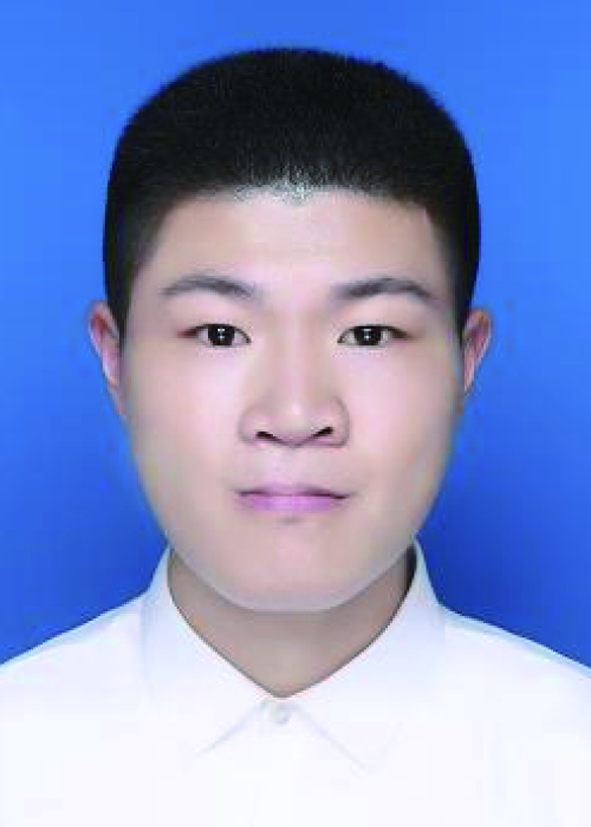 Chentai Cao is a PhD student under supervision of Prof. Xu Pan at University of Science and Technology of China. He is currently focusing on the regulation of perovskite crystallization in scalable fabrication processes.
Chentai Cao is a PhD student under supervision of Prof. Xu Pan at University of Science and Technology of China. He is currently focusing on the regulation of perovskite crystallization in scalable fabrication processes. Qiangqiang Meng got his PhD from University of Science and Technology of China. He started his research on photo-electro-catalysis in Yancheng Institute of Technology in 2015. Later on, he worked at Department of Materials Science and Engineering, City University of Hong Kong as a postdoctoral in 2017. In 2019, he joined Hefei Normal University as a full Lecturer and then Associate Professor. His research focuses on electrode materials for ion batteries and perovskite solar cells.
Qiangqiang Meng got his PhD from University of Science and Technology of China. He started his research on photo-electro-catalysis in Yancheng Institute of Technology in 2015. Later on, he worked at Department of Materials Science and Engineering, City University of Hong Kong as a postdoctoral in 2017. In 2019, he joined Hefei Normal University as a full Lecturer and then Associate Professor. His research focuses on electrode materials for ion batteries and perovskite solar cells. Jiajiu Ye received his doctoral degree from the University of Science and Technology of China, Hefei, 2017. Currently, he is an Associate Researcher at the Institute of Solid State Physics, Hefei Institutes of Physical Science, Chinese Academy of Sciences. His current research interests mainly focus on the photoelectric conversion mechanism of perovskite materials, the exploration of new materials and their applications in the fields of solar cells and detectors.
Jiajiu Ye received his doctoral degree from the University of Science and Technology of China, Hefei, 2017. Currently, he is an Associate Researcher at the Institute of Solid State Physics, Hefei Institutes of Physical Science, Chinese Academy of Sciences. His current research interests mainly focus on the photoelectric conversion mechanism of perovskite materials, the exploration of new materials and their applications in the fields of solar cells and detectors.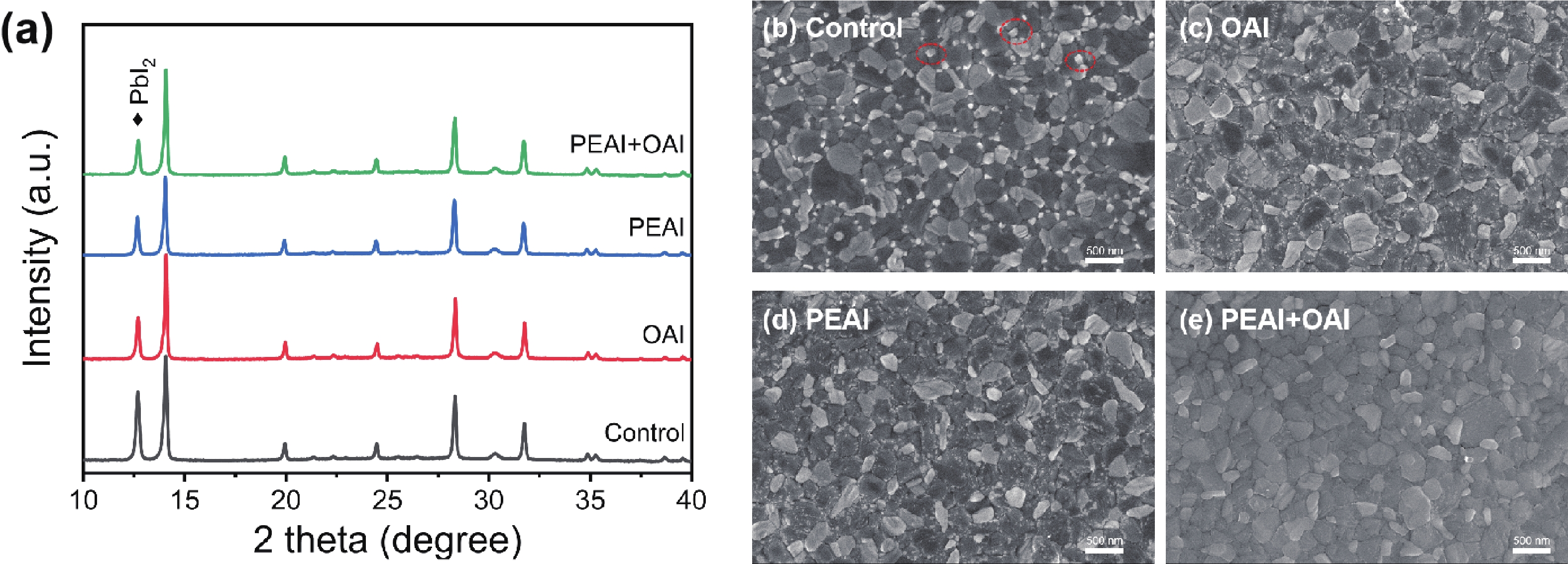
 DownLoad:
DownLoad:
